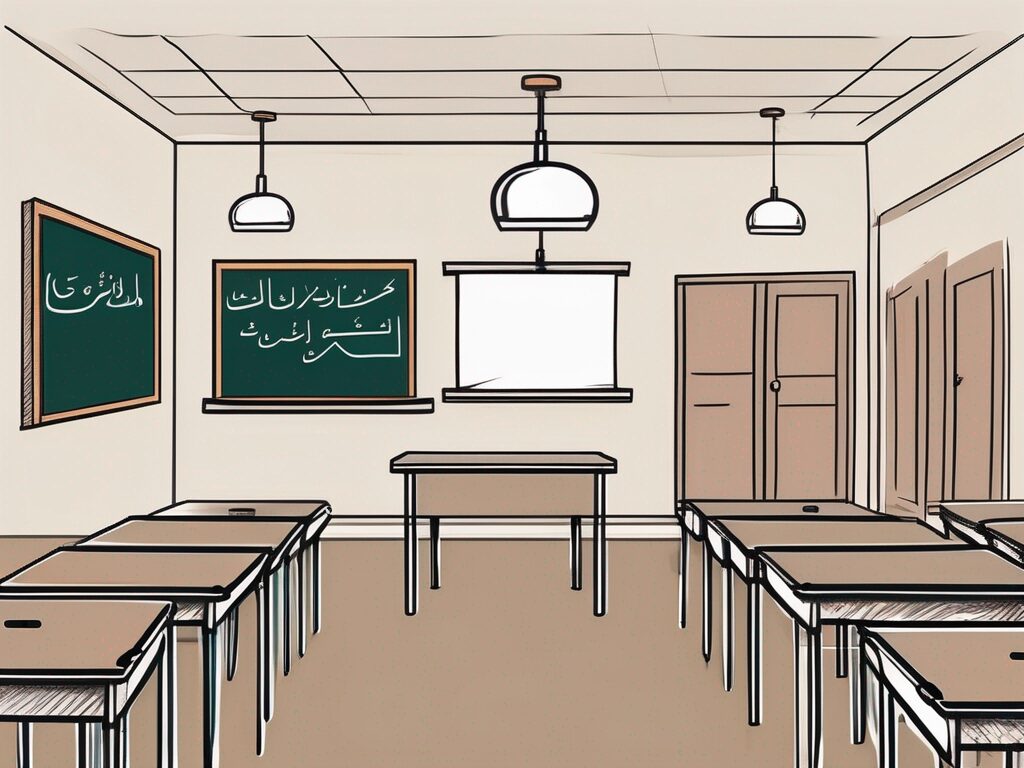Bilingual education, the practice of teaching students in two languages, is a hot topic in educational circles worldwide. In Saudi Arabia, this approach has been met with both enthusiasm and scepticism. As the country continues to globalise, the demand for bilingual education is on the rise, but it’s not without its challenges. Let’s delve into four key issues surrounding bilingual education in Saudi Arabia.
1. The Language Barrier
English Proficiency
English is the primary second language taught in Saudi schools. However, the level of English proficiency among students varies greatly. Some students grasp the language quickly, while others struggle. This disparity can lead to a divide in the classroom, with some students excelling and others falling behind.
Moreover, the lack of qualified English teachers is a significant issue. Many teachers are not native English speakers, which can affect the quality of teaching and, consequently, the students’ grasp of the language.
Arabic Language Erosion
Another concern is the potential erosion of the Arabic language. As more emphasis is placed on English, some fear that Arabic, the national language, may be sidelined. This could lead to a loss of cultural identity and heritage, which are deeply intertwined with language.
However, it’s worth noting that bilingual education doesn’t have to mean neglecting the native language. In fact, successful bilingual programmes often emphasise the importance of maintaining and strengthening the students’ first language.
2. Curriculum Development
Standardisation
Developing a standardised curriculum for bilingual education is a complex task. It requires careful planning and coordination to ensure that both languages are taught effectively. This is a significant challenge in Saudi Arabia, where education policies and practices can vary widely from one region to another.
Moreover, the curriculum needs to be flexible enough to cater to the diverse needs of students. For instance, some students may need more support in English, while others may need more focus on Arabic. Balancing these needs can be a tricky task.
Integration of Cultures
Another aspect of curriculum development is the integration of cultures. A bilingual curriculum should not only teach languages but also foster an understanding and appreciation of the cultures associated with those languages. This can help students become more open-minded and culturally aware.
However, integrating cultures in the curriculum can be a sensitive issue. It requires a delicate balance to ensure that the local culture is not overshadowed by the foreign one.
3. Societal Attitudes
Perception of Bilingual Education
Societal attitudes towards bilingual education in Saudi Arabia are mixed. Some see it as a necessary step towards globalisation, while others view it as a threat to the national language and culture.
These differing views can impact the implementation and success of bilingual programmes. For instance, parents who are sceptical about bilingual education may be less likely to enrol their children in such programmes.
Changing Attitudes
Despite the challenges, attitudes towards bilingual education are slowly changing. As the benefits of bilingualism become more widely recognised, more parents are starting to see the value in bilingual education.
Moreover, the government’s efforts to promote bilingual education, such as the Vision 2030 initiative, are helping to shift perceptions. This initiative aims to improve the quality of education in Saudi Arabia, with a particular focus on English language proficiency.
4. Resource Allocation
Funding
Bilingual education requires substantial funding. Schools need to invest in qualified teachers, textbooks, and other resources for both languages. In Saudi Arabia, where the education budget is already stretched, finding the funds for bilingual programmes can be a challenge.
However, investment in bilingual education can have long-term benefits. Studies have shown that bilingual individuals often have better cognitive abilities, improved problem-solving skills, and greater cultural sensitivity. These skills can be invaluable in today’s globalised world.
Teacher Training
Another resource issue is teacher training. To effectively teach in a bilingual setting, teachers need to be proficient in both languages and trained in bilingual teaching methods. This requires significant investment in teacher training and development.
Despite these challenges, the future of bilingual education in Saudi Arabia looks promising. With continued investment and a shift in societal attitudes, bilingual education could play a key role in shaping the country’s future.
Advance Your Career with Bilingual Education Expertise
As Saudi Arabia embraces the challenges and opportunities of bilingual education, the need for qualified educators with a deep understanding of global education systems has never been greater. IPGCE’s International Postgraduate Certificate in Education (iPGCE) is designed to help you overcome barriers to qualification, enhance your career progression, connect with a global network of professionals, and gain a comprehensive insight into international curricula—all while balancing your existing work commitments. Join the UK’s #1 Teacher Training Course and become part of the solution shaping the future of education in Saudi Arabia and beyond. Join now and take the next step in your professional development.

